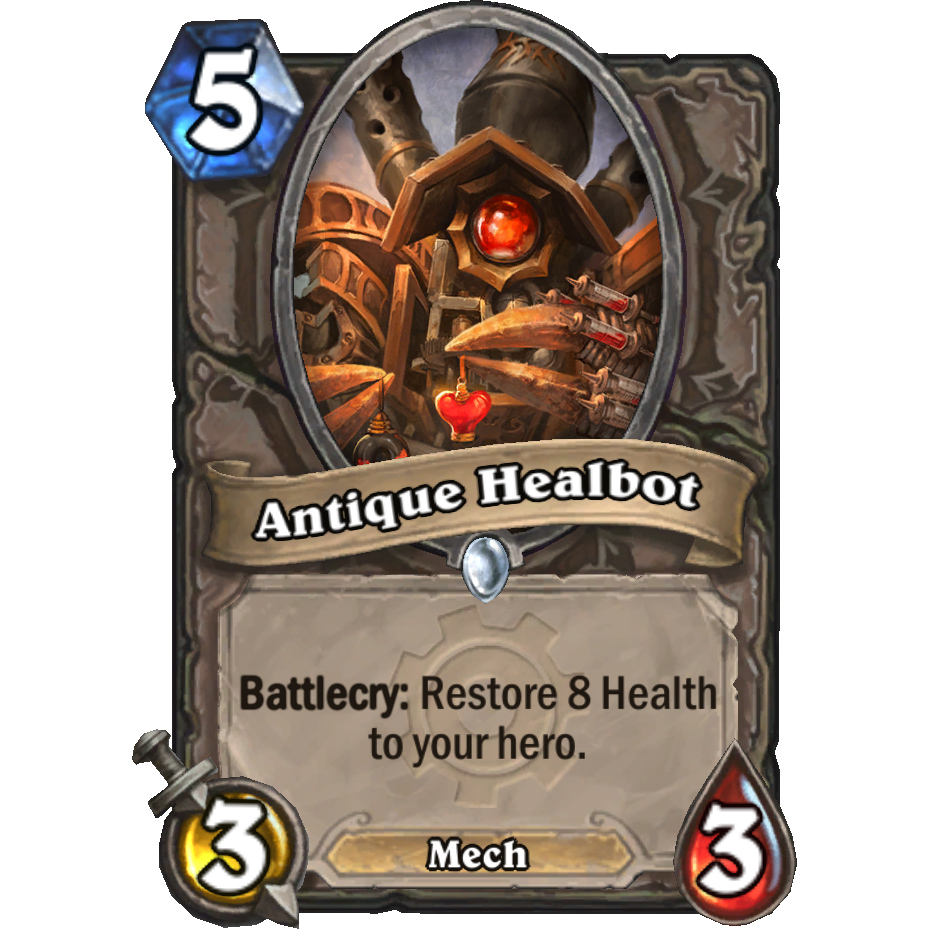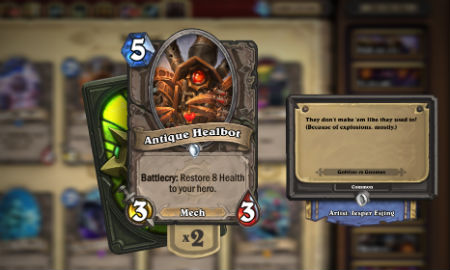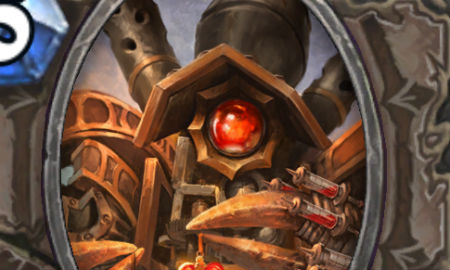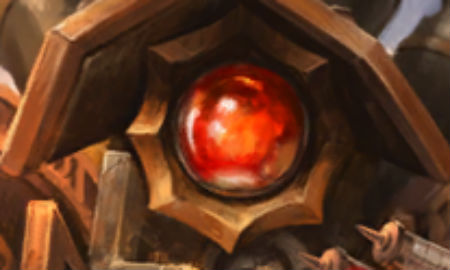How one card almost ruined Hearthstone
Old healers cause new problems

No-one saw it coming.
When the Goblins vs Gnomes expansion to Hearthstone introduced all its wonderful and wacky cards, we all wondered where the big swings in the meta were going to be.
More weapons? Mech decks? Viable warrior builds? All that came to pass. But who'd have predicted that the most transformative card of all would be a common five-mana 3/3 mech?
Step forward Antique Healbot.
The reason for the big costs and weak stats is an impressive special power: an instant heal of eight damage.
Seems a fair trade off. But veteran players are always saying that damage is the least important thing in Hearthstone.The important thing is whether you're alive or dead. the actual amount of health still on the clock is semi-irrelevant.
And so it is in terms of winning games. What no-one realised is what effect it might have on play time and strategy.
Bright beginningsAt first glance, Antique Healbot looks like not only a good, but a necessary addition. At all but the highest levels, the game was becoming dominated by cheap Hunter and Warlock aggro decks. Where's the fun, or indeed the strategy, in playing big cards and combos when you're facing a deck that can kill you in five turns or less?
I know how it feels. One of my favourite decks is a control Paladin. It's a ton of fun, but to make it viable I had to devote space to healing spells, area of effect damage and cheap taunts. Just to make it last long enough to get down things like Sunwalkers.

It's lucky that Paladin has combos that can make those effects valuable in multiple situations. For other classes trying to make control decks, devoting precious card slots to spells purely to combat aggro was no fun at all.
This is the gap that Antique Healbot was supposed to fill. Those extra eight health in that critical fifth turn gives you the extra breathing space to bridge into the big cards and let controls decks do what they're built to do. Plus you have a handy minion on the board to strike back at your tormentor with.
SnowballingAnd it works as advertised. Games take a bit longer when someone pushes out a Healbot because of those extra eight health. But that's okay: the result is often a splendidly taut endgame between an aggro deck on its last gasp of energy and a control deck just starting to snowball.
What if two Healbots go down, though?
That's an extra couple of turns added, and will almost certainly mean the end of an aggro deck. I run one of those too: a classic Zoolock, which is great when you want a fast game to fill a small timeslot. I started to notice more Healbots were coming into play, games were getting longer, end turns becoming drained of tension.

If two were the maximum that'd still be no big deal. But of course, just because you can only have two cards in your deck doesn't mean you can only have two on the board. Mages can duplicate. Shamans can reincarnate. Anyone can run a Brewmaster or cast Redepmtion. And all of those cards stack.
Suddenly, those eight health points aren't just eight health. They're sixteen. Or thirty-two. Or more.
AbuseA lot of frustrated aggro players have taken to calling Antique Healbot a "broken" card. Which is patently absurd. A company with the reputation and resources of Blizzard isn't going to allow a card that genuinely ruins the game through the playtest process.
Healing effects, however, can't be countered. The only way to combat the creep of Antique Healbot stacks is to run bigger damage cards and hope for the best.
Which would be fine if it wasn't for the fact they they make matches drag out for so much longer. One of the joys of Hearthstone for me was the way it gave you a rich and satisfying slice of strategy gaming in a ten-minute slot. Games with lots of Healbots can run twenty, even thirty minutes.

And it's not just a problem for people like me who like shorter games. Even if you enjoy the extended playtime, long matches run afoul of Hearthstone's hardest limit: card availability.
When you're pooling ten mana a turn and drawing one card, you'll quickly empty your hand. Card draw powers are expensive and, for everyone but Warlock, in short supply. So in these extended games you're often just drawing and playing whatever you just pulled. Bang goes all the strategy and tactics of card combinations.
It's just down to the luck of whether your next draw is an effective foil for what your opponent just played.
EndgameIt's not ruining the game. There are still plenty of people who don't use the card, and amongst those who do, most don't abuse its battlecry with duplication effects.
It is, however, spoiling it. The situation is not uncommon: I tend to meet at least one bot-spawner during my regular evening's questing. And if they get the card combos going, I just give up before the frustration sets in. The alternative is almost certainly a long and very dull match.

I'm pretty sure that's exactly the effect some of these players are hoping for. A quick win for zero effort, based purely on the annoyance value of their cards.
That this has even become a viable approach to the game is dispiriting. And there doesn't look to be an easy solution, either.
Nerfing the card has the potential to spoil its reasonable use in getting control decks rolling, but unless it's a big nerf still leaves it open to multiplication abuse...
